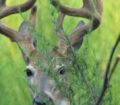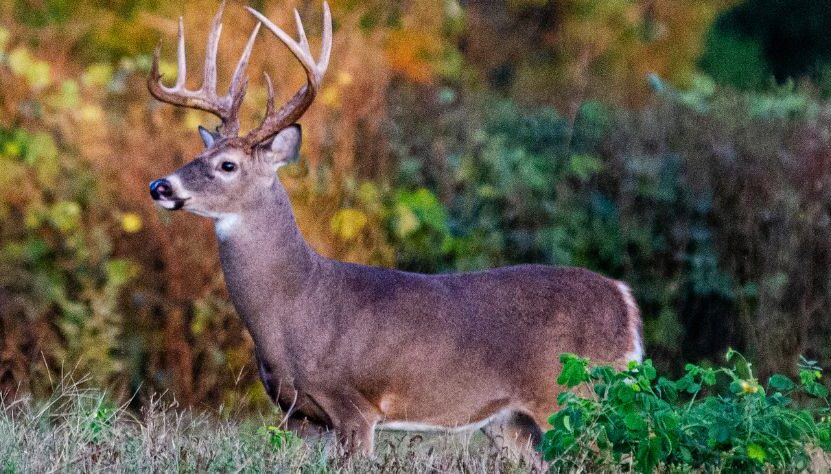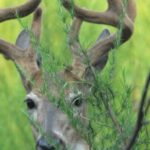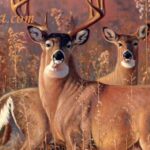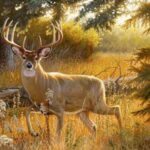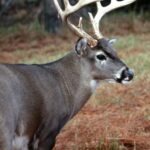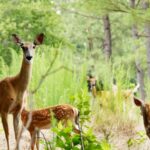Editor’s Note: You can plan starting now to prepare for deer season next fall. Two ways of bagging a buck include luck, which is a factor that a majority of hunters in many areas depend on solely, and experience – knowing the buck, his movement patterns, his behavior patterns, and what causes him to move from one place to another. Being able to predict deer movement is an important trait of the hunter who bags a buck year after year. Only a small amount of guesswork is involved in this type of hunting. The sportsman takes a set of given facts, studies the terrain, the available food, the deer’s mating habits, and the weather in his region, correlates them with deer signs he finds where he’s hunting, and comes up with a hunt plan that logically will put him in a position to see and have the best odds to bag a buck on any given day he hunts.
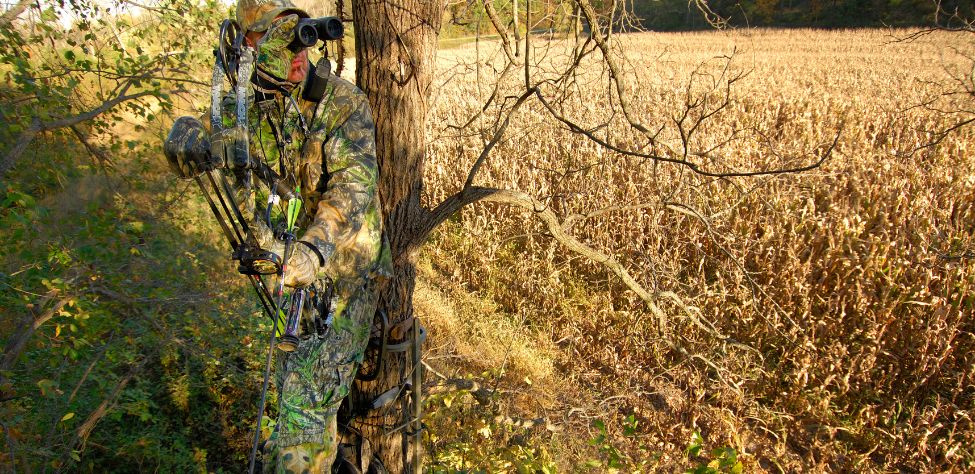
The buck deer’s movement patterns before the season starts are the patterns he’ll follow naturally at the first of the season when he’s not spooked and doesn’t have any hunting pressure exerted on him. This type of scouting is primarily for the bowhunter and the black powder shooter and may hold for the first one or two days of gun season. But when the woods are full of hunters, and deer are moving more from fright than for any-other reason, these patterns often don’t work.
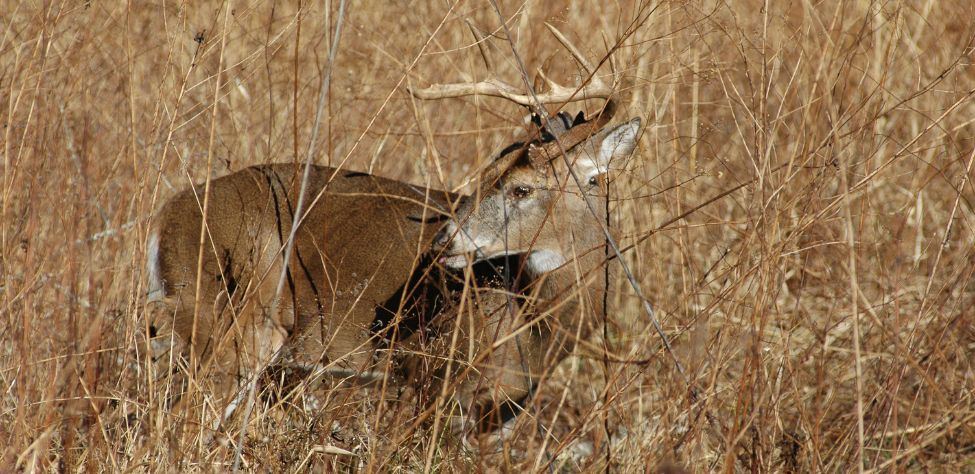
“To have a buck to shoot an arrow at on the opening morning of bow season, I begin to scout 4- to 6 weeks before the season begins,” Dr. Robert Sheppard, an avid student of deer behavior, explains. “If you start any sooner than that, the deer’s feeding patterns may change, and the food they’ve been depending on during the summer may not be the same food they’re relying on during bow season. Primarily early-season scouting is for deer moving toward or away from their feeding areas, unless the rut occurs at the beginning of bow season. If you don’t know what foods the deer are feeding on or should be feeding on during the first part of bow season, you can check with other hunters or the state conservation officer in your hunting area. In many regions of the country, one of the best places to find deer is around crops.
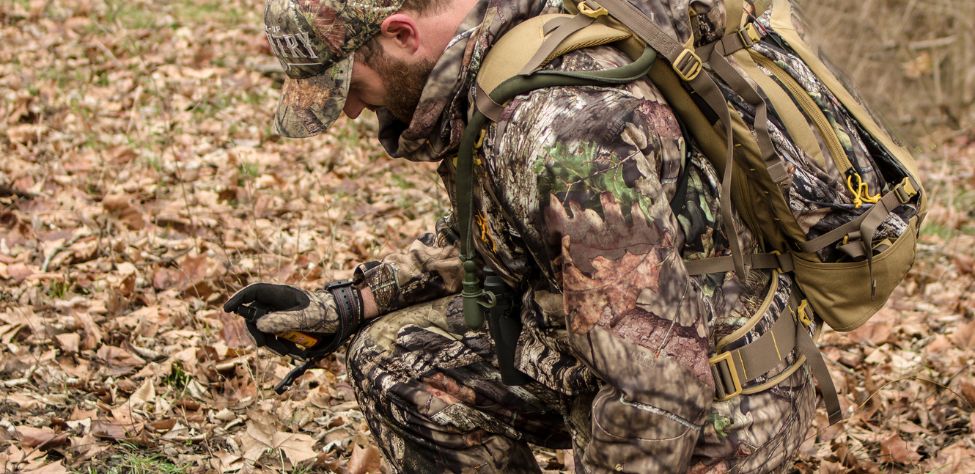
“For instance, on a cornfield that’s bordered by a wood lot, the easiest method for patterning deer in a cornfield is to walk the edge of the field and look for tracks. But just finding tracks on the edge of a cornfield isn’t enough evidence to justify setting up a tree stand or taking a stand close to that set of tracks going into the field. To increase your chances of taking a deer, you need to pinpoint tracks going into and coming out of the field at the same point. That’s where the likelihood of catching a deer entering or leaving a field is the greatest. Deer generally will move through the same region day in and day out, but they also will meander through an area. If they’ve started from a different point to come into the field on a particular day, they may use the same point to go out from the field. Or, if they’ve come into the field from the place you’ve pre-determined, then they may meander out in another direction. But usually, there will be one or two places along the edge of a field that deer prefer to use for entering the field.”
Looking for more content? Check out our YouTube channel and watch “The One that Got Away with Terry Drury” by John E. Phillips.
Expert Guidebooks on BowHunting Deer: Best Sellers
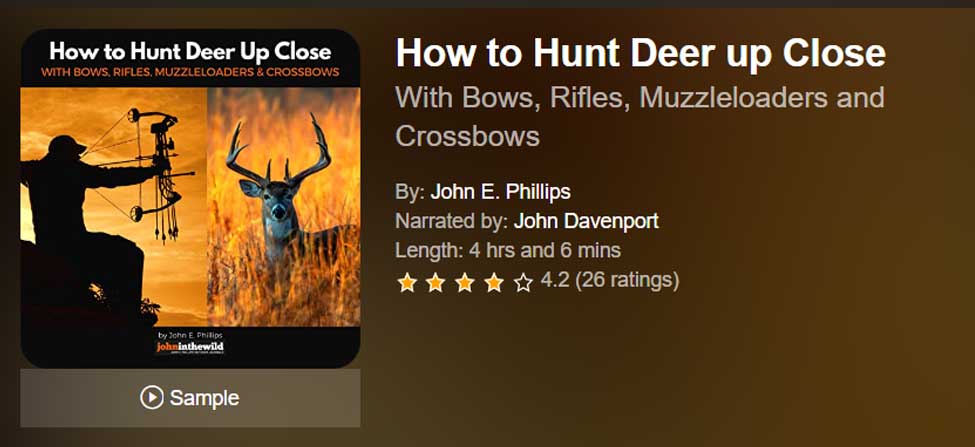
How to Hunt Deer Up Close with Bows, Rifles, Muzzleloaders and Crossbows
To be more successful as a deer hunter, learn all you can about the animal, the wind, the temperature and the techniques required to get in close.
In this book, you’ll hear about some of the best hunters in the nation who know how to hunt deer close, including one of the greatest archers who ever lived, Howard Hill.
John E. Phillips also shares his own deer stories and hunting tips from 50 years of experience.
VERSIONS: AUDIBLE, KINDLE & PRINT
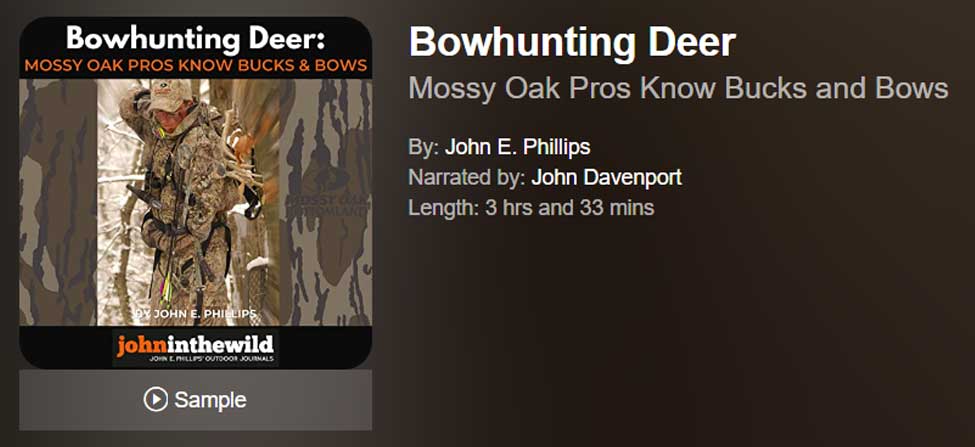
Many deer hunters have told me: “I want a deer-hunting book with regular hunters who are just like me” and “I want a deer-hunting book with the best advice from the best professional deer hunters in the nation”.
Mossy Oak’s Pro Staff is made up of some of the nation’s best deer hunters, professional deer hunters, and TV hosts whose names and advice often are heard in deer camps all over the nation. But many of the more than 1,000 Mossy Oak Pro Staff hunters are everyday, weekend, and vacation deer hunters just like you.
Whether you hunt private or public lands, you’ll find tips and tactics in this book from the Mossy Oak Pro Staff that will increase your odds for locating and taking the bucks of your dreams.
If you’re serious about learning to hunt and take deer with a bow, if you’re looking for a different strategy that will help you identify and harvest big bucks, if you want to learn from your misses as well as from the shots that connect, and if you enjoy being in the great outdoors that the Good Lord has blessed us with, then this book is for you.
VERSIONS: AUDIBLE, KINDLE & PRINT

How to Hunt and Take Big Buck Deer on Small Properties
In this book, you’ll hear from 14 hunters who either have gained permission or leased properties as small as six acres to as much as 250 acres, and how they consistently take older-age-class bucks off these little lands.
VERSIONS: AUDIBLE, KINDLE & PRINT

Jim Crumley’s Secrets of Bowhunting Deer
Using a black magic marker and a gray work jumpsuit, Jim Crumley of Buchanan, Virginia, drastically changed the nature and purpose of hunting camouflage when he created the first sportsman’s camouflage – Trebark. Crumley’s love of bowhunting and his desire to be more invisible changed hunting clothing forever.
In this hunting guide, he shares the wisdom that he’s learned throughout his lifetime about how to be a hunter, how to find a deer lease, how to scout for deer, and more.
Special features include how to:
- Have a magic 60 acres to hunt
- Decide the best equipment to use
- Find deer year-round
- Locate land to hunt
- Know the best place to put your tree stand
- Get bucks within bow range
VERSIONS: AUDIBLE, KINDLE & PRINT

How to Hunt Deer Like a Pro
How do you know if the land you hunt has a trophy deer on it? Wildlife manager Bob Zaiglin, of Uvalde, Texas and Jim Crumley, the father of modern-day hunting camouflage, tells you how to find out. GPS can make finding and taking that trophy buck easier. This hunting guide will teach you how to hunt big bucks where no one else can find them, how to call deer, and how to become versatile as a deer hunter, so that if one deer tactic doesn’t work, another one will.
In the chapter, “How to find Bucks at Scrape,” Dr. Keith Causey, retired professor of Wildlife Science at Auburn University, describes the best way to hunt a scrape.
Brad Harrison of Neosho, Missouri, is a nationally-known videographer, professional deer hunter and master at calling deer. Another master is Will Primos of Primos Game Calls. These two experts will tell the best deer calls and when to use them in this book.
And for over 20 years, Bo Pitman, lodge manager of White Oak Plantation, has been studying deer movement patterns. He explains what types of conditions are best for predicting deer movement.
VERSIONS: AUDIBLE, KINDLE & PRINT

Deer hunting and deer hunters are drastically changing each year. To learn new techniques for hunting deer and have more places to hunt, I’ve interviewed some of the best deer hunters in the nation and share their tactics in How to Hunt Deer Like a Pro: Volume II.
In Chapter 10, Jacob Lamar tells you his tactics for consistently taking older-age-class bucks on public lands in several states. Chapter 11, Bob Walker explains how to find places on public lands where you can hunt that 99 percent of the other hunters never have considered hunting. The Bonus Chapter with David Ramey tells you how, where, when and with what equipment to take big Kansas bucks on public lands by hunting in 100-degree weather when others won’t hunt.
Chapter 13, Mark Drury, his family and his guests take mature bucks every season by having more small places to hunt rather than one large property. Drury explains the strategy of having satellite farms to hunt that only may be 50-150 acres each or less. Chapter 15, Pat Reeve, who hunts far-northern states and Canada, says, “I don’t like hunting for mature bucks until the weather is 20 degrees or less.” Chapter 4, Dr. Larry Marchinton says that funnels are the most-reliable stand sites to hunt for big bucks and tells why.
VERSIONS: AUDIBLE & PRINT
Tomorrow: Understand Mark Drury’s Scouting for Deer


